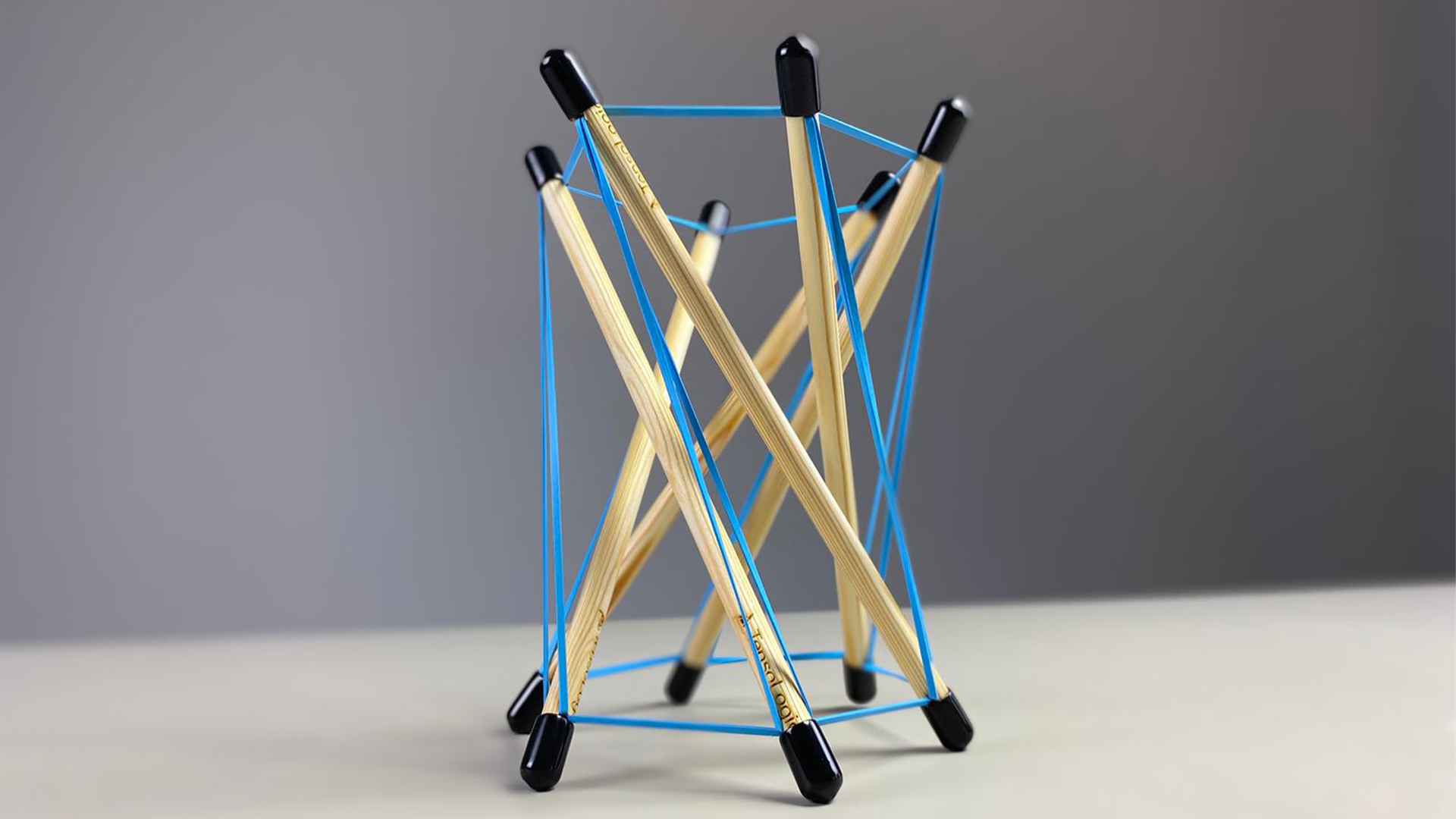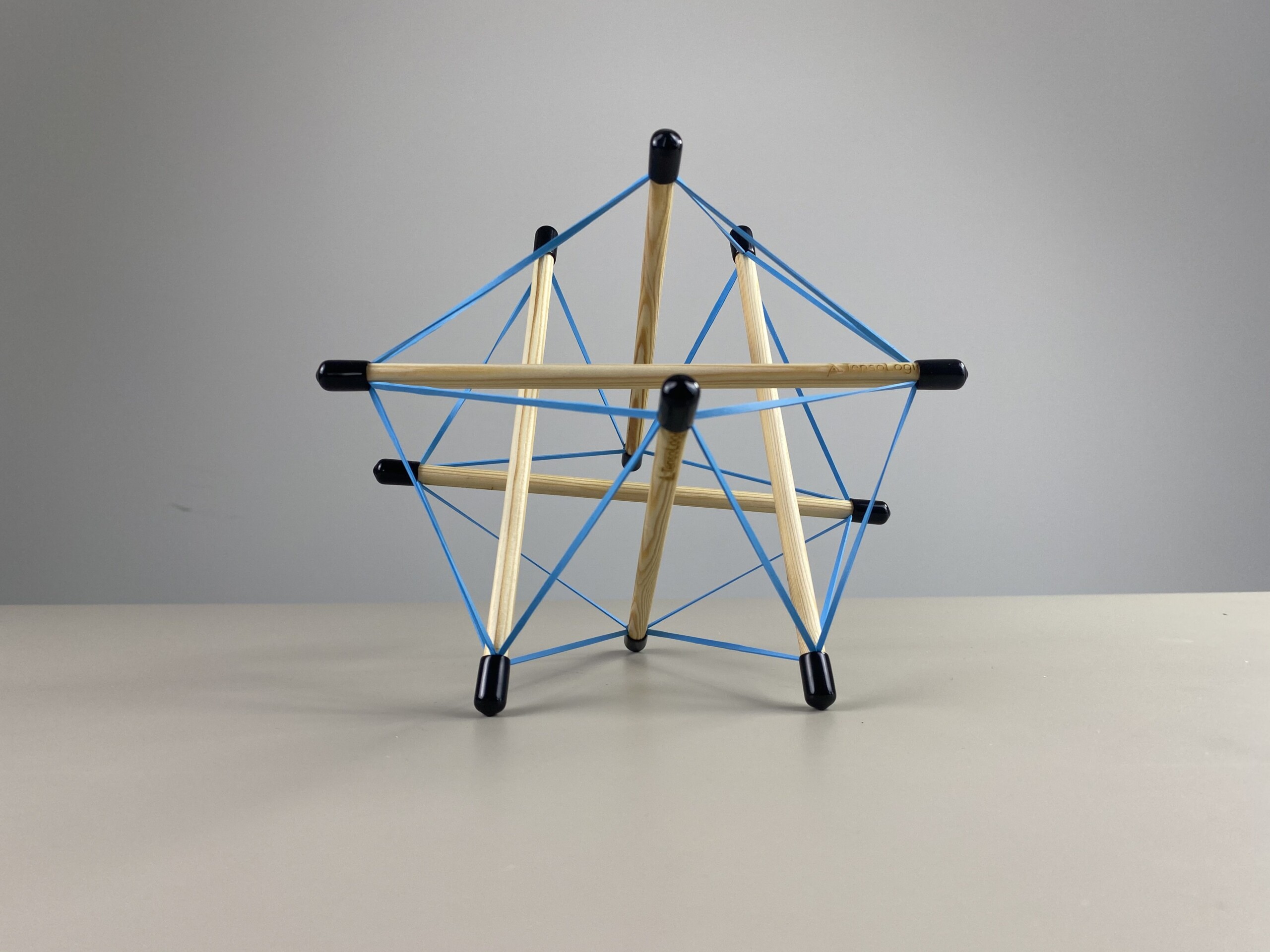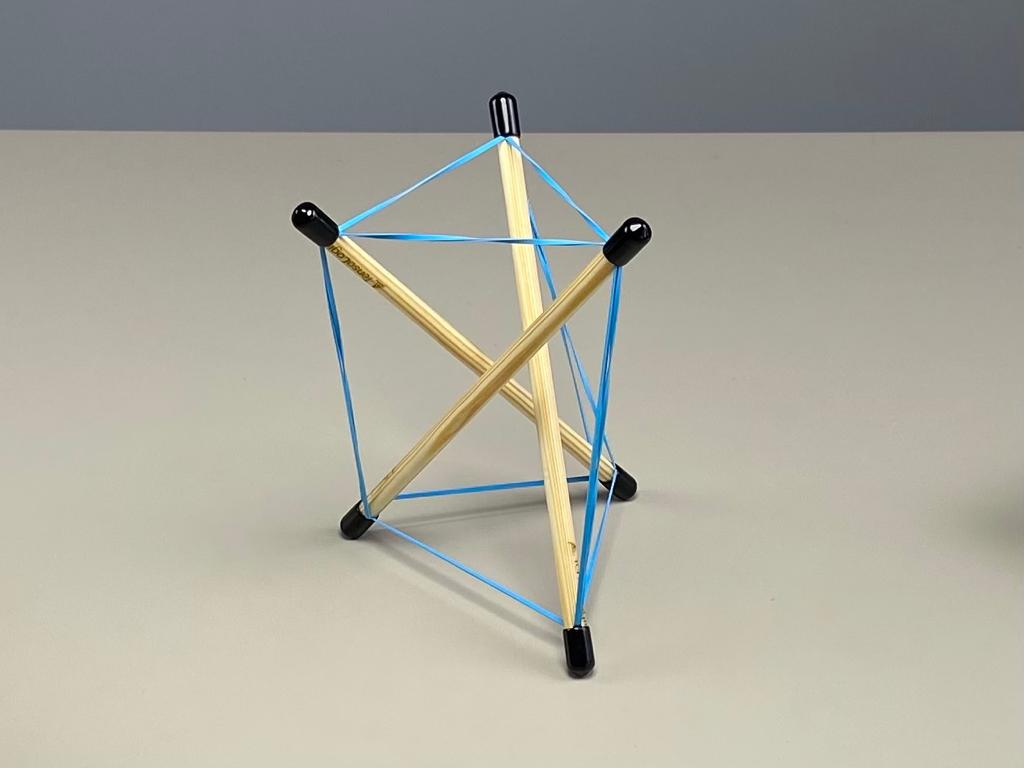What is tensegrity?
Tensegrity means tensional integrity.
It is a combination of the words tension and integrity. They are skeletal structures formed by using a group of parts that continuously apply tension to each other and parts that compress each other. This theory is evaluated in many areas from architecture to furniture designs, from sculpture to robot designs.
The foundations of tension structures were laid by Emmerich into the constructivist art world. “Proto-tensegrity”, the first sculpture that resembles the structure of tension, pointed out that it was made by a constructivist artist Karl Ioganson and this work was exhibited in 1920 and 1921 in Moscow under the title of “Balance Study”. Reproduced from photographs, this sculpture consisted of three rods and seven wires and could be manipulated with another cable.
Tensegrity systems can be represented as floating interconnected levers in networked arrays, operating without fixed pivot. Tensegrity systems are lightweight structures, the stability of which is dependent on the equilibrium of tension and compression.
Tensegrity models are extremely light and flexible. Pressure is evenly distributed on parts of the structure. Therefore, it has the capacity to withstand stress. That quality makes them durable. One of the reasons tensegrity structures are so robust and durable is that the spread of force is effectively distributed across multiple redundant paths.
With Advanced Tensegrity Kit, you can create:
6 Dowel bowl structure
6 Dowel icosahedron structure
3 Dowel bowl structure
Pelvis structure
And you can create more
There is a balance within the system. This balance is similar to the balance of the universe. For example, the negative charged electrons are balanced with the positively charged protons. It is possible to come across many systems of this type, which are in balance, on earth.
Tensegrity could be summarized as:
1. Composed of stress (tendons) and compression (struts).
2. Struts discontinuous while cables continuous.
3. Rigidified (for kinematically indeterminate system) or strengthened (for kinematically determinate system) by self-stressing.
4. Self-supporting
Tensegrity systems have led to the emergence of lighter and more durable design systems. Richard Buckminster Fuller, Kenneth D. Snelson, and David Georges Emmerich are regarded as the founders of Tensegrity systems. The sculptor, Kenneth Snelson, also developed sculptures and models on this subject.
Tensegrity systems are
Balanced
Tensegrity systems are
Light
Tensegrity systems are




